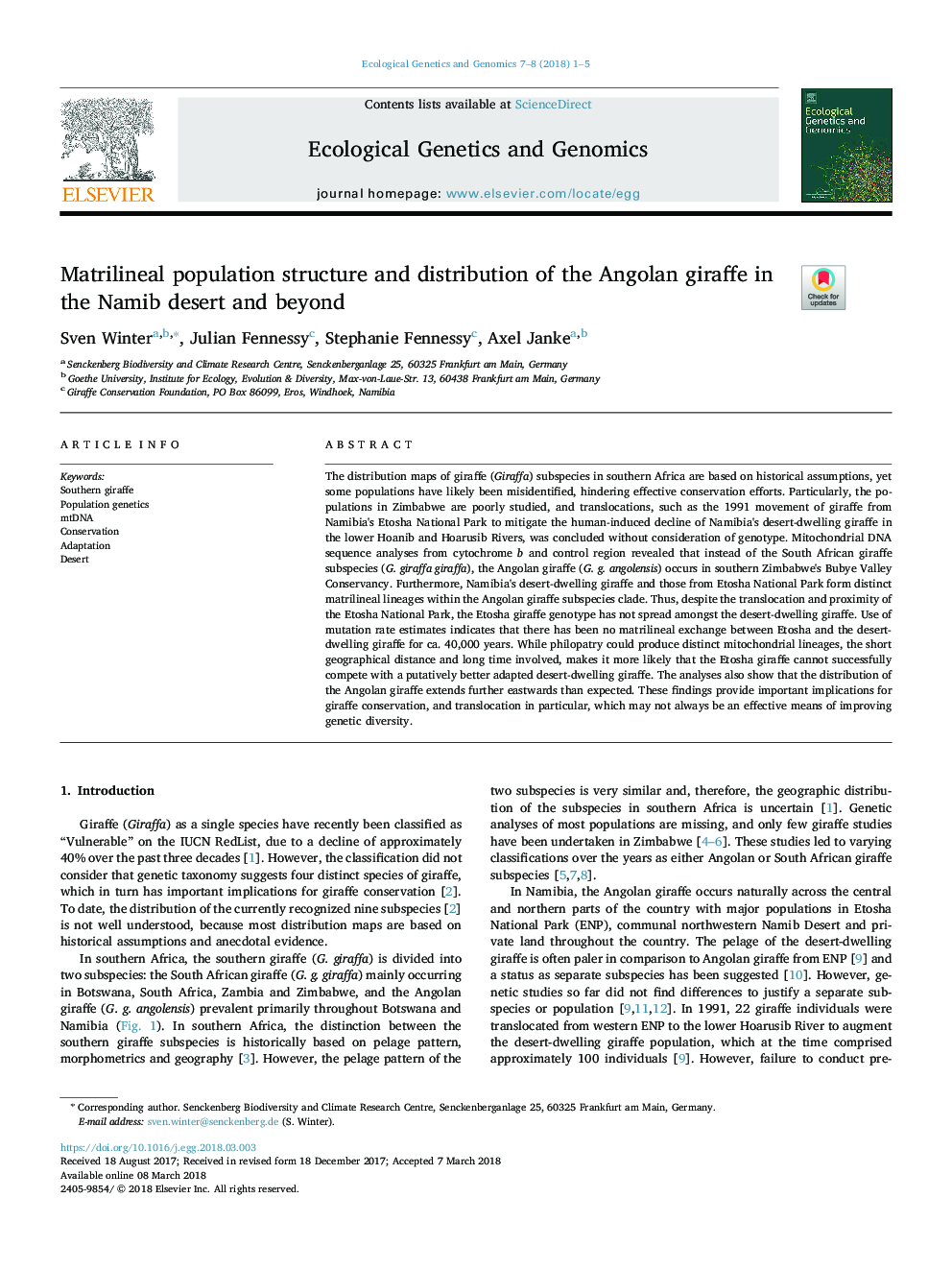| Article ID | Journal | Published Year | Pages | File Type |
|---|---|---|---|---|
| 8644121 | Ecological Genetics and Genomics | 2018 | 5 Pages |
Abstract
The distribution maps of giraffe (Giraffa) subspecies in southern Africa are based on historical assumptions, yet some populations have likely been misidentified, hindering effective conservation efforts. Particularly, the populations in Zimbabwe are poorly studied, and translocations, such as the 1991 movement of giraffe from Namibia's Etosha National Park to mitigate the human-induced decline of Namibia's desert-dwelling giraffe in the lower Hoanib and Hoarusib Rivers, was concluded without consideration of genotype. Mitochondrial DNA sequence analyses from cytochrome b and control region revealed that instead of the South African giraffe subspecies (G. giraffa giraffa), the Angolan giraffe (G. g. angolensis) occurs in southern Zimbabwe's Bubye Valley Conservancy. Furthermore, Namibia's desert-dwelling giraffe and those from Etosha National Park form distinct matrilineal lineages within the Angolan giraffe subspecies clade. Thus, despite the translocation and proximity of the Etosha National Park, the Etosha giraffe genotype has not spread amongst the desert-dwelling giraffe. Use of mutation rate estimates indicates that there has been no matrilineal exchange between Etosha and the desert-dwelling giraffe for ca. 40,000 years. While philopatry could produce distinct mitochondrial lineages, the short geographical distance and long time involved, makes it more likely that the Etosha giraffe cannot successfully compete with a putatively better adapted desert-dwelling giraffe. The analyses also show that the distribution of the Angolan giraffe extends further eastwards than expected. These findings provide important implications for giraffe conservation, and translocation in particular, which may not always be an effective means of improving genetic diversity.
Related Topics
Life Sciences
Biochemistry, Genetics and Molecular Biology
Genetics
Authors
Sven Winter, Julian Fennessy, Stephanie Fennessy, Axel Janke,
